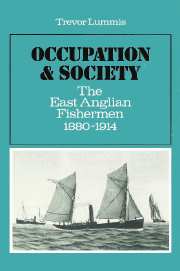Book contents
- Frontmatter
- Contents
- List of figures and tables
- Acknowledgements
- Map
- Introduction
- PART ONE OCCUPATIONAL STRUCTURE
- PART TWO THE SOCIAL STRUCTURE
- 5 The concept of community
- 6 The social structure of ownership
- 7 Images of social structure
- 8 Political attitudes
- PART THREE THE FAMILY, SOCIAL PRACTICE AND BELIEF
- Appendix: supplementary information on the interviews
- Glossary
- Notes
- Bibliography and sources
- Index
6 - The social structure of ownership
Published online by Cambridge University Press: 22 October 2009
- Frontmatter
- Contents
- List of figures and tables
- Acknowledgements
- Map
- Introduction
- PART ONE OCCUPATIONAL STRUCTURE
- PART TWO THE SOCIAL STRUCTURE
- 5 The concept of community
- 6 The social structure of ownership
- 7 Images of social structure
- 8 Political attitudes
- PART THREE THE FAMILY, SOCIAL PRACTICE AND BELIEF
- Appendix: supplementary information on the interviews
- Glossary
- Notes
- Bibliography and sources
- Index
Summary
In most countries, increased capitalisation of a fishing industry has usually been accompanied by a change in the pattern of ownership and organisation of firms; that is, the fisherman-owned firms are succeeded by large corporations that are often vertically integrated.
C. Wadel 1972Capital distribution is a crucial aspect for the study of any industry and the industrial and social relations which accompany it. In this case there was an additional reason for a close analysis. The fishermen recalled the industry as an open one with able skippers being able to move into ownership. Even where they were employed by companies they referred to the owner in familiar terms and perceived little social gulf between themselves and their employers. Furthermore, where ownership was by fishermen rather than by commercial companies, they insisted that this was predominately individual not kin nor neighbour groups as was the case in most (if not all) other regions where fishing capital was still owned by fishermen. Because the oral evidence revealed these unexpected dimensions it brought into sharp focus the problem of the authenticity of retrospective evidence: it was open to charges of unrealistic memories which over-emphasised harmony and unity in social relations based on an economic myth. The availability of documentary sources comprehensive enough to permit a thorough breakdown of the structure of ownership provided an unusual opportunity to juxtapose recalled perceptions with the contemporary material reality.
- Type
- Chapter
- Information
- Occupation and SocietyThe East Anglian Fishermen 1880-1914, pp. 78 - 89Publisher: Cambridge University PressPrint publication year: 1985



